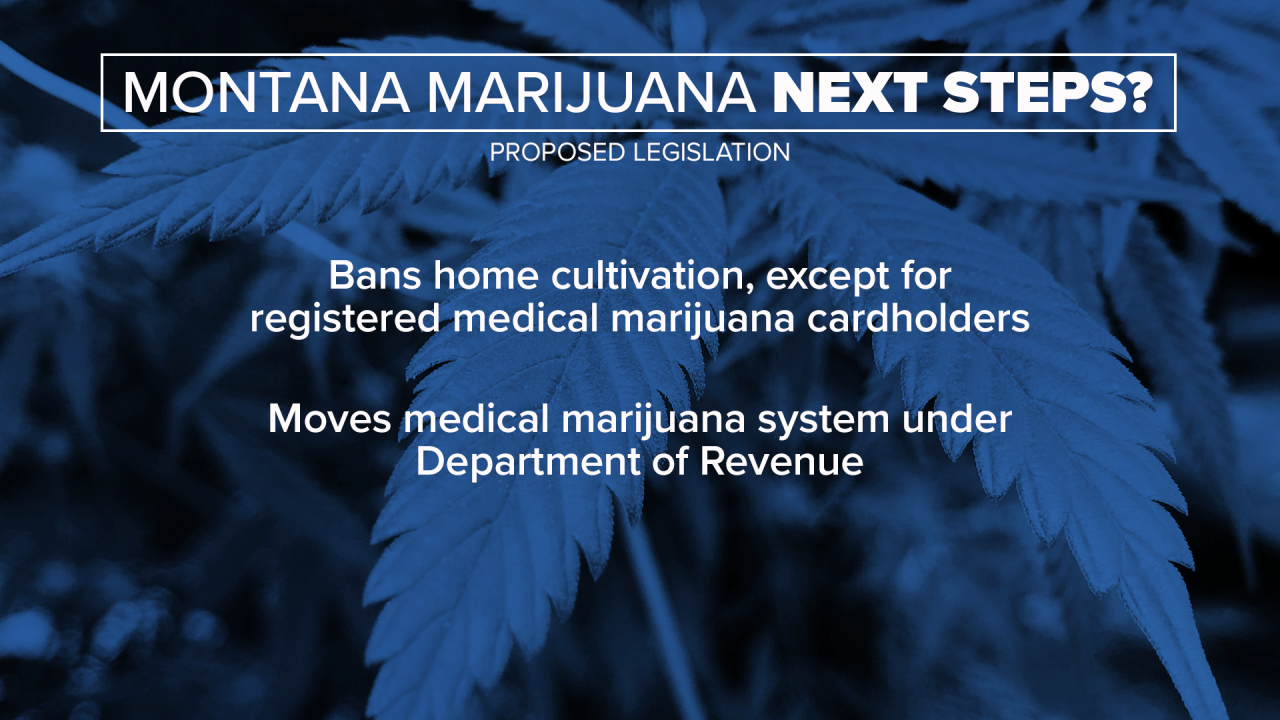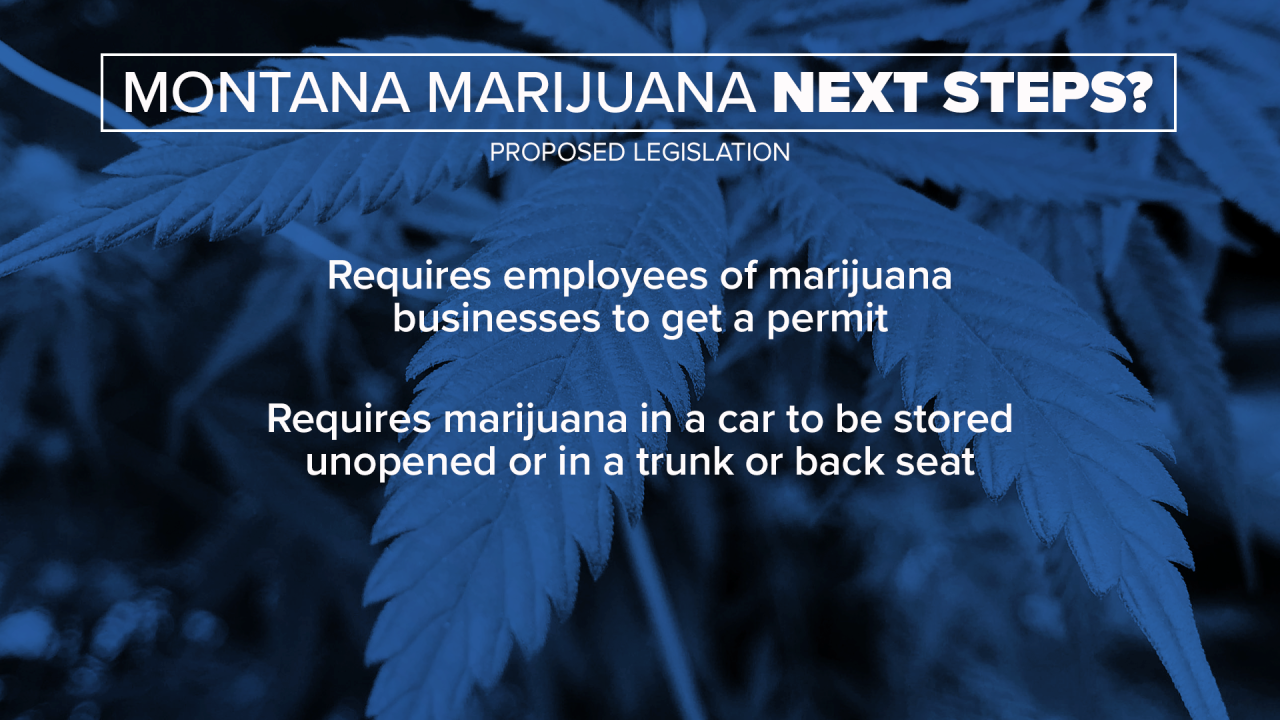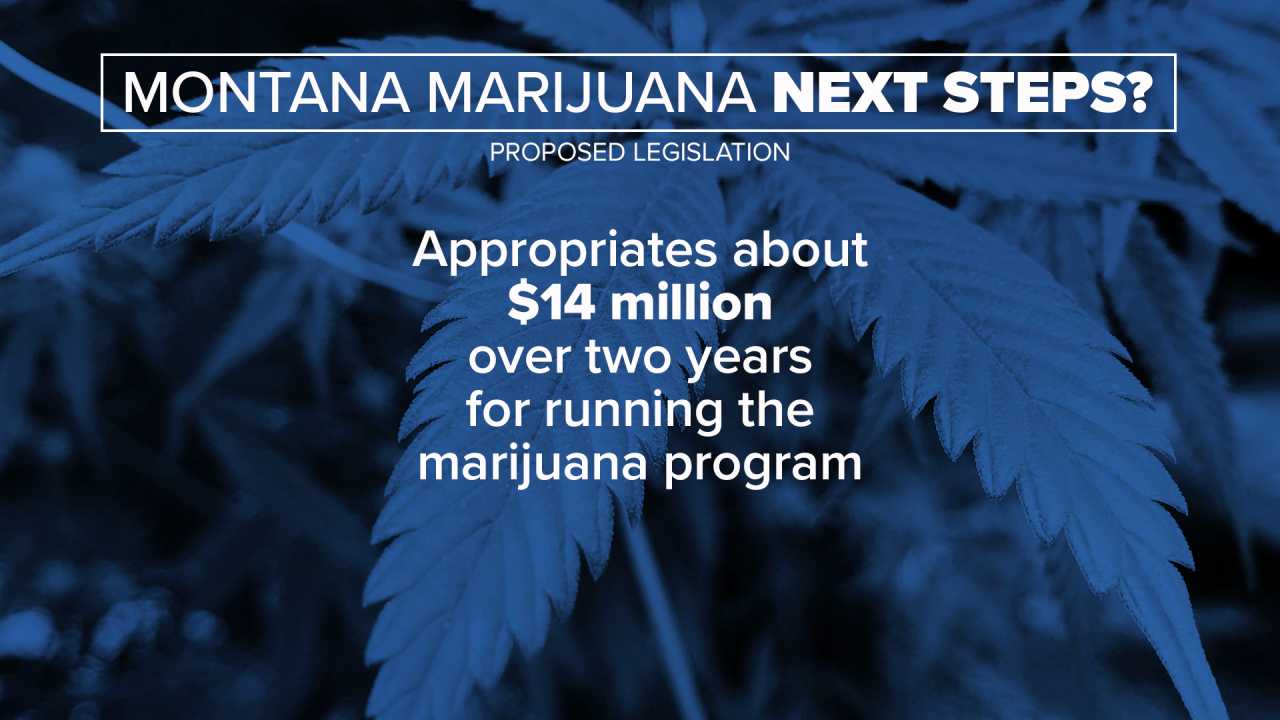HELENA — What is likely to be the main marijuana reform bill debated in the Montana Legislature this year is now making its way through the editing process.
The proposed bill was requested by Republican Rep. Mike Hopkins of Missoula and drafted with input from Gov. Greg Gianforte’s administration and the Montana Department of Revenue. As of Thursday, the draft text for the bill includes more than 250 pages.
Hopkins said Thursday that the text is still likely to go through changes as it goes through the drafting process, but they won’t affect the main goal of the bill: creating a more “controlled, responsible” start to recreational marijuana sales.
“Do it in the right way, so that people feel like their vote at the ballot box was respected, and do it in a way that makes sure that we don’t have any repeats of 2004 when we started out with our medical program – now we’ve got a great medical program, but the original iteration, I don’t think the people of Montana really appreciated the green buses running everywhere,” he said. “We’re trying to learn from that experience, and I think we have learned from that experience.”

The proposed draft would amend most aspects of Initiative 190, the voter-approved measure that established a legal framework for a recreational marijuana system. Some of the biggest provisions include:
· Redirecting up to $6 million of annual marijuana tax revenues to the “Heart Fund,” a special account proposed by Gov. Gianforte that would fund substance abuse and mental health treatment
· Moving the medical marijuana program under the Montana Department of Revenue
· Banning home cultivation of marijuana, except for registered medical marijuana cardholders
· Stating that local governments must specifically opt in to allowing marijuana businesses before one can open
· Reserving one marijuana license for each of Montana’s eight tribes
· Requiring employees of marijuana businesses to get a permit, and requiring licenses for those who transport marijuana
· Requiring any marijuana in a car to be stored unopened or in a trunk, locked glove compartment or behind the back seat
· Appropriating about $14 million over the next two years to administer the medical and recreational marijuana programs
Pepper Petersen, president and CEO of the Montana Cannabis Guild, was one of the leaders of the I-190 campaign. He said he’s most concerned about the proposed restrictions that impact businesses – particularly the requirement that local governments opt in and a rule blocking people who had previous convictions for marijuana offenses from getting a marijuana license.

“We expect there’s still going to be some opportunity for change that comes up with the bill,” Petersen said. “We’re going to be asking folks to come to the Capitol or get on Skype and make comments about this legislation as it moves forward – look for some positive amendments that would make it more workable.”
The proposed draft would leave the current tax rates in place: 20% on recreational marijuana sales and 4% on medical sales.
In the original initiative, nearly half of the tax revenue from recreational sales would have gone to public lands programs – particularly the Habitat Montana program that pays to acquire land for protection of wildlife habitat. I-190 also set aside money for veterans’ programs and health care worker salaries.

Hopkins’ bill would leave some funding for state parks, trails and wildlife management, but most of the money would be redirected to the Heart Fund and the state general fund.
On Thursday, several conservation groups – including the Montana Wildlife Federation, the Montana Snowmobile Association and the Montana Wild Sheep Foundation – gathered at the State Capitol to urge lawmakers to preserve the public lands funding.
“Last fall, we all lined up and said, “We’re all for access, we’re all for this additional conservation funding,’” said Tom Puchlerz, president of the Montana Wildlife Federation board. “This is a chance for legislators to step up and show it, and support the will of Montana voters.”
Hopkins said voter initiatives can’t bind the Legislature on how to spend money. He said there will be other opportunities to fund the priorities that had been included in I-190.

“I don’t think I needed an initiative to tell me that the people of Montana liked conservation, and I don’t think I needed an initiative to tell me that the state of Montana and the people of Montana support our veterans,” said Hopkins. “Even though we might not deal with it quite as directly through the recreational marijuana bill, obviously we have about 1,500 other pieces of legislation working their way through, and I think that we’re going to be addressing both conservation issues as well as veteran issues through those bills.”
Hopkins’ bill will not have an official number until it is introduced. He said that is likely to be some time next week.
Marijuana is likely to be one of the biggest issues the Legislature considers during the second half of this year’s session, and several more large bills could still be in the drafting process.



